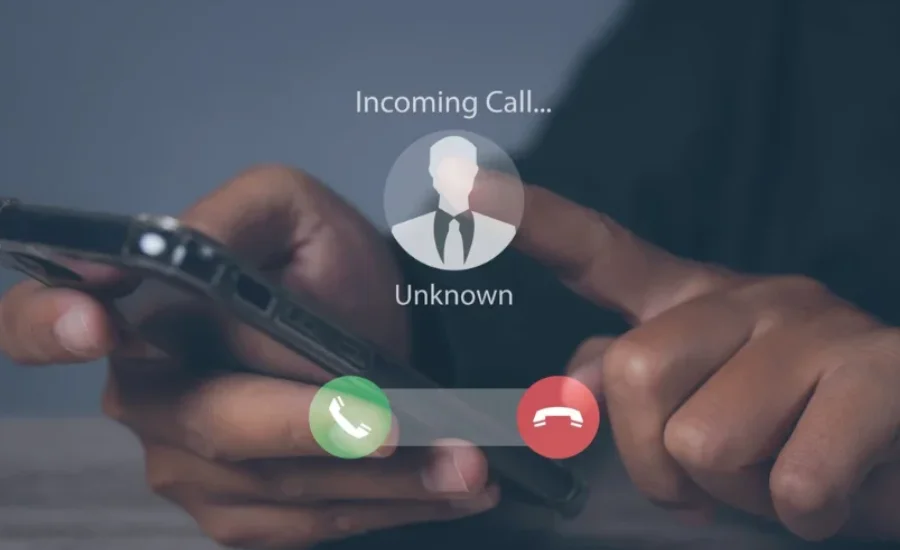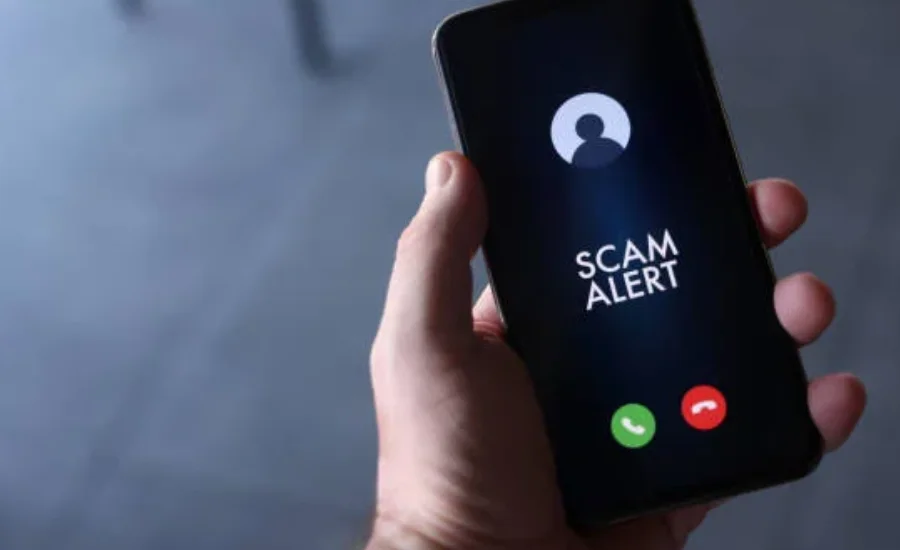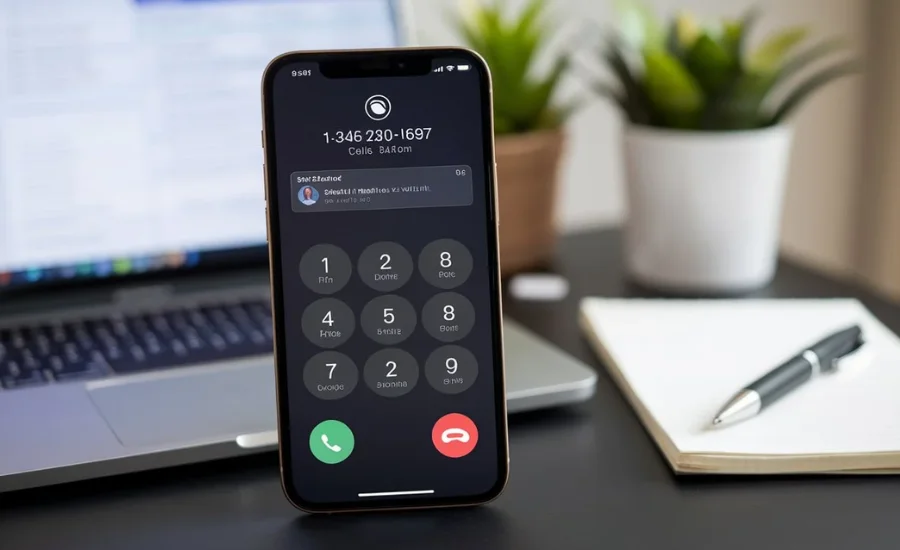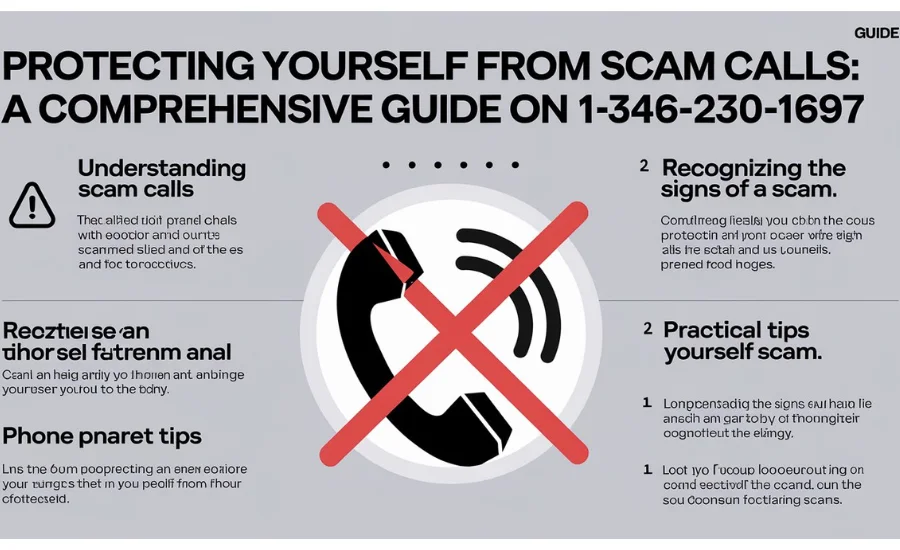The number of scam calls in today’s digital environment has increased, putting a great deal of people at risk of fraud and financial loss. You may be suspicious of the number 1-346-230-1697 if it has been ringing on your phone lately. With a focus on suspicious numbers such as 1-346-230-1697, this article aims to arm you with important information and practical tactics to protect yourself from scam calls. Let’s look at how you may strengthen your phone’s security and safeguard your sensitive information.
To start, it’s critical to identify the typical traits of scam calls. In order to trick victims into divulging personal information, scammers frequently employ strategies like urgency, fear, or unexpected rewards. Trust your gut and end the call if you ever receive a call that seems questionable.
Here are some proactive measures you can take to safeguard against these unwanted calls:
Screen Unknown Numbers: Use caller ID features to screen calls. If you don’t recognize the number, let it go to voicemail. Legitimate callers will often leave a message.
Utilize Call Blocking Features: Many smartphones offer built-in call-blocking features that can help you manage unwanted calls. Additionally, consider downloading reputable third-party apps that specialize in identifying and blocking spam calls.
Register with Do Not Call Lists: In the United States, registering your number with the National Do Not Call Registry can reduce the number of telemarketing calls you receive. While this won’t eliminate all scam calls, it can significantly lower their frequency.
Stay Informed: Familiarize yourself with the latest scams circulating in your area. Websites and community resources often provide updates on prevalent scams, helping you stay one step ahead of potential fraudsters.
Report Suspicious Calls: If you receive a call that appears to be a scam, report it to your local consumer protection agency or the Federal Trade Commission (FTC). Reporting these calls can help authorities track and take action against scammers.

By remaining vigilant and adopting these protective measures, you can better shield yourself from the risks associated with scam calls. Always prioritize your safety and personal information, and don’t hesitate to seek assistance if you feel threatened by fraudulent communications.
Understanding and Protecting Yourself from Scam Calls
In order to convey a false feeling of urgency, scammers frequently pose as reputable enterprises, banks, governments, or IT firms. Their goal is to trick you into thinking that something has to be done right now, generally by requesting sensitive data such as credit card numbers or Social Security numbers. Threats of legal action may even be used by some to coerce you into complying. Knowing their strategies is essential to defending oneself.
Common Red Flags of Scam Calls
Receiving unsolicited calls is one of the main warning indicators, especially from unknown numbers such as 1-346-230-1697. Scammers frequently employ caller ID spoofing, which shows recognizable or local numbers to entice you to answer. Be cautious if someone calls demanding personal or financial information; respectable companies would never ask for this kind of information over the phone without first doing appropriate verification. Furthermore, hostile conduct or threats made during the conversation are clear indicators of a hoax.
Real-Life Examples of Scam Tactics
Numerous people have reported receiving shady calls from 1-346-230-1697, some of which purport to be the IRS and demand money right away. Others have been notified that they need to take immediate action since their bank accounts were hacked. It’s important to maintain composure and refrain from disclosing any personal information because these strategies are meant to cause fear.
Steps to Safeguard Yourself from Scam Calls
To protect yourself, follow these straightforward yet effective steps:
- Avoid Engaging with Unknown Callers: If you receive a call from an unfamiliar number, let it go to voicemail.
- Block Suspicious Numbers: Use your phone’s call-blocking features to prevent future calls from numbers like 1-346-230-1697. Both iOS and Android devices have options to block unwanted calls. For landlines, many providers offer call-blocking services.
- Utilize Third-Party Apps: Consider installing call-blocking apps such as Truecaller, RoboKiller, or Hiya. These apps identify and block known scam numbers, offering an additional layer of protection.
- Register with the National Do Not Call Registry: While this won’t eliminate all unwanted calls, it can reduce them. Scammers often ignore these regulations, so combining this with other protective measures is essential.
- Report Scam Calls: If you receive a suspicious call from numbers like 1-346-230-1697, report it to the Federal Communications Commission (FCC) or the Federal Trade Commission (FTC). Reporting these calls helps authorities track and shut down scammers.
Recognizing the Anatomy of a Scam Call
Scam calls frequently follow a recognizable pattern. Callers typically claim to be from reputable organizations to gain trust. They often employ fear tactics, suggesting urgent issues with your account or the necessity for immediate financial decisions. Requests for sensitive information like Social Security numbers or banking details are common. By being aware of these strategies—impersonation, urgency, and information requests—you can better protect yourself.
Identifying Scam Calls: Key Indicators

To identify potential scam calls, look for these warning signs:
- Unfamiliar Caller: If the caller claims to represent an organization you haven’t interacted with, be cautious.
- Requests for Personal Information: Legitimate businesses do not ask for sensitive information over the phone.
- Threats or High-Pressure Tactics: Calls that create urgency or use threats are usually scams.
- Poor Language or Grammar: Many scam calls originate from overseas, which may result in awkward phrasing or poor grammar.
What Steps to Take If You’ve Been Targeted by a Scam Call
If you realize you’ve been targeted by a scam call, take immediate action:
- Contact Your Bank: If you shared financial information, inform your bank or credit card company. They can help secure your accounts and prevent unauthorized transactions.
- Change Passwords: Immediately update passwords for sensitive accounts, using strong, unique passwords.
- File a Report: Report the incident to the FTC or FCC, providing as many details as possible. Additionally, notify your local police.
- Consider Identity Protection Services: Enroll in credit monitoring or identity theft protection services for added security.
- Seek Legal Advice: If you lost a significant amount of money, consider consulting a lawyer specializing in scam-related cases for guidance on recovering your funds.
The Evolution of Scam Calls
Scam calls have gotten more complex over time; good instances of how con artists may take advantage of gullible people include numbers like 1-346-230-1697. You can maintain your vigilance by being aware of the frequent strategies used, such as caller ID spoofing and the use of well-known area codes.
You may considerably lower your chance of being a victim of scam calls by being aware of the warning indicators and taking preventative action.
Understanding Scam Calls and How to Protect Yourself
Scam calls have become increasingly prevalent, often targeting individuals through various tactics designed to exploit trust and create a sense of urgency. Here’s a detailed breakdown of common tactics, red flags, real-life examples, protective measures, and more information on identifying and responding to scam calls.
Common Tactics Used by Scammers
Scammers often impersonate trusted organizations to gain the victim’s trust. They might claim to be from:
- Banks: Indicating there are issues with your account.
- Government agencies: Such as the IRS, demanding immediate payment or tax-related information.
- Tech companies: Offering tech support for nonexistent issues.
Their primary objective is to instill a sense of urgency, prompting you to act quickly, often leading to the disclosure of personal information or even direct payments.
Red Flags to Watch Out For
- Unsolicited Calls: If you receive a call you weren’t expecting, be cautious. Scammers often use spoofed numbers to make it appear as though the call is from a familiar source.
- Requests for Personal Information: Legitimate organizations will not ask for sensitive details like Social Security numbers or bank account information over the phone.
- Aggressive Behavior: If a caller becomes threatening or uses high-pressure tactics, it’s likely a scam.
Real-Life Examples of Scam Calls
Many reports have emerged regarding calls from numbers like 1-346-230-1697, which may claim to be from the IRS or your bank. These scams often involve:
- Fake Tax Collections: Impersonating the IRS and threatening legal action for unpaid taxes.
- Account Compromise Alerts: Claiming your bank account is at risk and needing immediate action to secure it.
These calls are designed to provoke panic, making it essential to remain calm and avoid divulging any personal information.
Steps to Protect Yourself from Scam Calls
- Do Not Engage: If you suspect a call is a scam, hang up immediately. Avoid sharing any personal information.
- Block Suspicious Numbers: Use your phone’s built-in features or third-party apps to block known scam numbers.
- Use Call Screening Apps: Apps like Truecaller and RoboKiller can identify and block scam calls.
- Register with the National Do Not Call Registry: This may help reduce unwanted calls, although it does not eliminate them entirely.
- Report Scam Calls: Notify authorities like the Federal Trade Commission (FTC) to help track and shut down scam operations.
The Anatomy of a Scam Call
Understanding the structure of a typical scam call can help in identifying them:
- Impersonation: Scammers often pretend to be from a reputable organization.
- Urgency: They create a false sense of urgency to compel quick action.
- Sensitive Information Requests: They often request personal details to execute their schemes.
How to Identify a Scam Call
When assessing whether a call is a scam, look for these signs:
- Unfamiliar Caller: Be wary of calls from unknown numbers or companies you haven’t interacted with.
- Language and Grammar Issues: Poor language skills can indicate a scam, as many come from overseas.
- High-Pressure Tactics: Legitimate organizations do not use threats or pressure to extract information.

Actions to Take If You’ve Been Victimized by a Scam Call
If you realize you’ve shared sensitive information:
- Contact Your Bank: Alert them to protect your accounts.
- Change Passwords: Immediately update passwords for sensitive accounts.
- Submit a Report: Notify the Federal Trade Commission (FTC) or the Federal Communications Commission (FCC) about the incident.
- Consider Credit Monitoring: Services can alert you to identity theft.
Seeking Legal Help if Necessary
If significant financial loss occurs, consider consulting with a lawyer who specializes in scams. They can guide you through recovery options and legal actions against the fraudsters.
Read More: Moraya Boggan
Final Words
By recognizing the tactics and signs associated with scam calls, individuals can better protect themselves from falling victim to these fraudulent schemes. Stay vigilant, use available resources, and educate yourself on how to respond to suspicious calls effectively. The key to safeguarding your personal information and finances lies in awareness and proactive measures.
For more information Check It Out InsightRays



